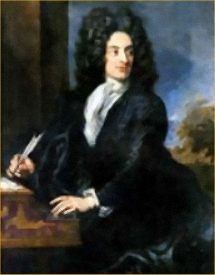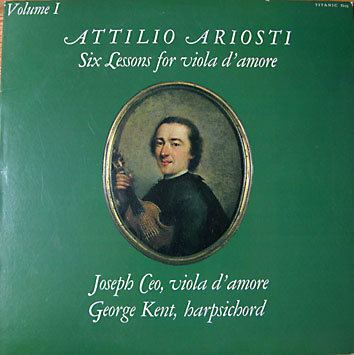Name Attilio Ariosti | Role Composer | |
Died 1729, London, United Kingdom Books Cantates and a collection of lessons for the Viol d'A (rist. anast. Londra, 1728) Similar People Giovanni Bononcini, Lawrence Zazzo, Filippo Mineccia, Francesca Cuzzoni, Nicola Porpora | ||
Jan dismas zelenka attilio ariosti
Attilio Malachia Ariosti (5 November 1666 – 1729) was a Servite Friar and Italian composer in the Baroque style, born in Bologna. He produced more than 30 operas and oratorios, numerous cantatas and instrumental works.
Contents
- Jan dismas zelenka attilio ariosti
- Attilio Ariosti 1666 1729 Viola damore Sonata no18 in d minor
- Life
- Instrumental music
- Oratorios
- Operas
- Librettos
- References
Attilio Ariosti (1666-1729): Viola d'amore Sonata no.18 in d minor
Life

Ariosti was born into the middle class. He became a monk in 1688 at age 22, but he soon obtained permission to leave the order and become a composer in the court of the Duke of Mantua and Monferrato. He became a deacon in 1692, the same year he achieved the post of organist at Santa Maria dei Servi in Bologna.

In 1697, he went to Berlin at the request of Sophia Charlotte of Hanover, Queen of Prussia, a great-granddaughter of James I of England and daughter of the Electress Sophia of Hanover, an enlightened patroness of the arts with a keen interest in music. After enjoying the favor of the Queen, Ariosti wrote and collaborated in the writing of a number of stage works performed for the court in Berlin. He resided in Berlin as the court composer until 1703.

His first opera was performed in Venice in 1697. From 1703 to 1709 he was the General Austrian Agent for Italy, during the reign of Joseph I. After 1716 he achieved enormous success in Paris and London. In London, he shared with Georg Frideric Handel and Giovanni Bononcini the directorship of the Royal Academy of Music, and he played the viola d’amore in an entr’acte in Handel’s Amadigi di Gaula. In 1724 he published a Collection of Cantatas, and Lessons for the Viola d'Amour, which he sold by subscription. This publication may have been the most successful sale of music by subscription in the 18th century.

Although he could sing, write drama, play the violoncello and harpsichord; his favorite instrument was the viola d'amore, for which he wrote 21 solo sonatas. These are usually called the Stockholm Sonatas, as the sole surviving source for most of them is in the Statens Musikbibliotek in Stockholm, Sweden. The Stockholm Sonatas display Ariosti's liking for surprising harmonies, his inventive use of silence, and his wit.
Instrumental music
Oratorios
The best known is "La Passione di Cristo" (Vienna, 1709)
Operas
Altogether 23 operas, among them:
